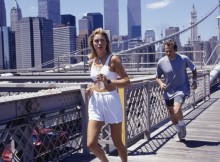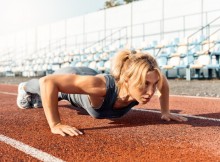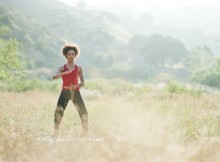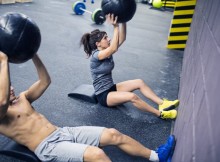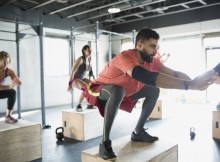At-Home Workouts to Improve Balance Mobility and Strength in Your 60s and Beyond
Advertisements
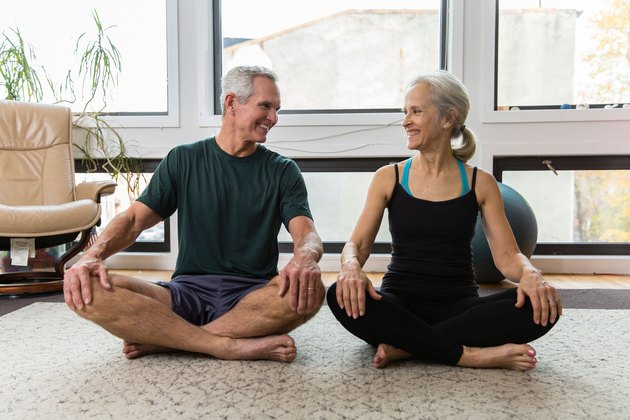
Advertisements
but if you're alone, designing an exercise program that includes cardiovascular exercise, muscle strengthening and balance training should give you a comprehensive fitness program. This includes dance, Taijiquan, low impact sports, walking, weightlifting and other activities. The best way to keep safe and injury free is to relax and enter the exercise plan slowly. Mindbody's health manager, certified personal trainer Kate ligler, recommends starting with your weight and comfortable range of motion, especially if you're a beginner. &Make sure your body is warm and really ready to move forward before you step up or add resistance, she said. If you have arthritis, old injuries that cause discomfort or persistent illness, listen to your body. Focus on the time of day when you feel the best and adjust your movements accordingly, ligler says. &She explained that time to eat, medicine and weather could all be factors. Remember, exercise should never be painful or make you over painful. In order to maintain safety all the time, Leslie bell, certified personal trainer of National Academy of sports medicine, chief coach of Pacific Neuroscience Research Institute, personal coach and brain health coach are recommended to check pulse during exercise to ensure heart rate safety and avoid overwork. Most treadmills and bikes have heart rate sensors that you can use during exercise. You can also use a heart rate monitor or a fitness watch to read your heart rate.
know your health condition
if you have any health condition or you are 39 years old; take a drug that may affect your physical activity, Bell said it and 39 are important to understand and monitor the symptoms and signs related to your condition. Take a moment to review possible heart problems or stroke symptoms during exercise and make sure to talk to your doctor before starting a new exercise program. When starting the resistance program, Bell said it was & 39; a good idea to do sitting exercises first, then standing exercises. To increase resistance, she recommends using a small weight hand or resistance strap. Go to the next exercise until you reach the end. Take a two minute break and repeat.
move 1: bicep curl
- grab 2 to 10 pounds of hand weight.
- start with arms together and palms facing out.
- curl the weight to the chest height and hold for two seconds, then relax.
Repeat 10 times. -
- starts with feet flat on the floor.
- extend your right knee and push your toes to the sky.
Press and hold for two seconds, lower your body and switch sides.
Repeat 10 times for each leg. -
- grab 2 to 10 pounds of hand weight.
- lean forward on the chair and keep your elbows close to your body.
- extend the arm and hold the back of the upper arm (triceps). Two seconds.
Relax and repeat 10 times.
Repeat 10 times. Use 2 to 10 pounds of hand weight. - bend the elbow slightly and lift the arm outwards until it is parallel to the floor.
- face the floor, hold for two seconds, then return to the starting position.
Repeat 10 times. -
- keep the heels on the ground, lift the toes up to the sky and hold for two seconds.
Release to the starting position. You can use your feet alternately, or you can use both feet at the same time. Repeat 10 times. The stretching sequence from Austin Martinez, director of education of stretchlab, is a good additional component after aerobic exercise. If you're going to do it as an independent activity, warm up before you start stretching (for example, take a few brisk steps).Movement 1: waist rotation extension
- shoulders back upright, gently rotate the shoulders to the left.
- return to the middle position before turning slightly to the right. It's a good stretch when you wake up, especially when you lie on your back.
move 2: Kneel hip flexor extension
- kneel on the floor, or spread a blanket to increase the cushion, one foot forward, flat on the floor. Gently sink and push your hips forward. You can keep your balance in a nearby chair.
Make sure to stretch on both sides. -
- to find immovable objects, such as the edge of a wall or door frame.
- grasp the object with one hand, keep the arm extended, and bend the elbow at a 90 degree angle.
- gently move the shoulders and body away from the extended arm and hold for 20 seconds.
Repeat on the other side. -
- stand facing the wall.
- grasp the wall and move one foot as far back as possible, making sure the toes are facing forward.
Keep this stretch for 20 seconds, then switch sides.
It's important to exercise strength, improve balance and keep moving at any age, but it's especially important for the elderly, ligler said. She suggests combining a simple, scalable or advanced home routine with basic equipment.mobile 1: inchworm (strength / mobility)
- start from standing, fold at the hip, until hands reach the floor in front.
Walk your hands forward until you reach the plank position and keep your legs straight. - return to standing through reverse movement.
-
- and hold tightly.
- straighten your arms and pass the rope from the top of your abdomen to your lower back.
- as mobility increases, slowly bring your hands closer.
When performing actions, stand on one leg for balance challenge. -
- supine, legs extended to the ceiling, knees bent 90 degrees.
- extend your arms to both sides to ensure that the shoulder blades, spine, and hands are in contact with the ground.
- slowly turn your knees left and right, keeping your shoulder blades on the floor, challenging your posture muscles.
Step 4: hip swing (balance / movement)- extend the arm against the wall and extend one leg forward.
- swing your legs horizontally in front of you, back and forth, just like playing golf with your legs.
Step 5: squat on the wall (strength)- lean back against the wall, and slide down slowly as if you want to sit on a chair. > Li> find a challenging position that can be maintained for at least 20 seconds (hip 90 degrees, knee is ideal). Establish it slowly. If you want to increase your heart rate, burn calories, and exercise the strength and flexibility of your lower body, Jim Edwards is a certified personal trainer of anytime fitness. Basic exercises help strengthen the muscles of the hips and buttocks (including the lower back and abdominal muscles). It can also be used as a warm-up.
mobile 1: hiking from bridge to hip
- lie on your back, bend your knees, press your feet into the floor, lift your hips off the floor and back to the floor.
Make 15 repetitions in three groups. -
- keep supine, knee bending, towel between knees, feet off the ground, back to the ground.
Repeat the three groups of actions 10 times each time. -
- lie on your side, bend your hips and knees, lift your knees, and put your feet together.
- repeat 15 times in three groups, and turn to the other side after each repetition.
-
-
- lie down face down, the forearms are parallel when two hands clench.
- lift the forearms and feet to keep the head in line with the heel.
Mobile 5: plank type
- lie down face down, the forearms are parallel when two hands clench.
move 4: stretch back and lie on your back, put your forehead on your hand, lift your arms and head off the ground, and make sure your forehead is in contact with your hand. Be careful not to lean your head back when you lift off the floor.
Go back to the floor.
Three groups were repeated 10 times. -
Mobile 3: grab type
- lie on your side, bend your hips and knees, lift your knees, and put your feet together.
mobile 2: leg lifting
- keep supine, knee bending, towel between knees, feet off the ground, back to the ground.
- lie on your back, bend your knees, press your feet into the floor, lift your hips off the floor and back to the floor.
- lean back against the wall, and slide down slowly as if you want to sit on a chair. > Li> find a challenging position that can be maintained for at least 20 seconds (hip 90 degrees, knee is ideal). Establish it slowly. If you want to increase your heart rate, burn calories, and exercise the strength and flexibility of your lower body, Jim Edwards is a certified personal trainer of anytime fitness. Basic exercises help strengthen the muscles of the hips and buttocks (including the lower back and abdominal muscles). It can also be used as a warm-up.
- extend the arm against the wall and extend one leg forward.
movement 3: Iron Cross (strength / movement)
- supine, legs extended to the ceiling, knees bent 90 degrees.
mobile 2: grasp a elastic rope, belt or towel by (balance / mobile)
- and hold tightly.
- start from standing, fold at the hip, until hands reach the floor in front.
Mobile 4: leg extension
- stand facing the wall.
movement3: stretch the chest
Advertisements
- to find immovable objects, such as the edge of a wall or door frame.
- kneel on the floor, or spread a blanket to increase the cushion, one foot forward, flat on the floor. Gently sink and push your hips forward. You can keep your balance in a nearby chair.
- shoulders back upright, gently rotate the shoulders to the left.
move 5: lift the toes up
- keep the heels on the ground, lift the toes up to the sky and hold for two seconds.
move 3: triceps stretch
- grab 2 to 10 pounds of hand weight.
mobile 2: leg extension
- starts with feet flat on the floor.
